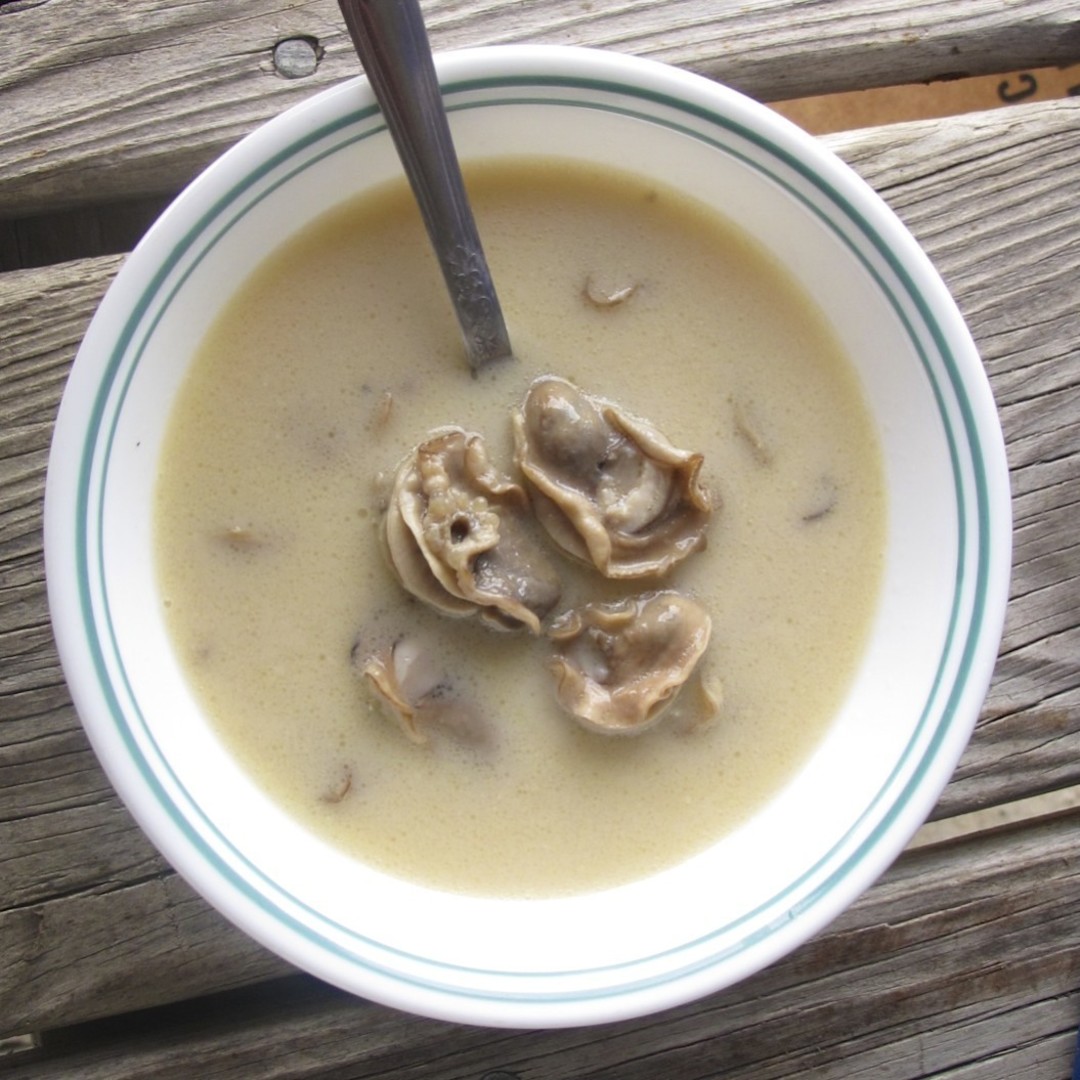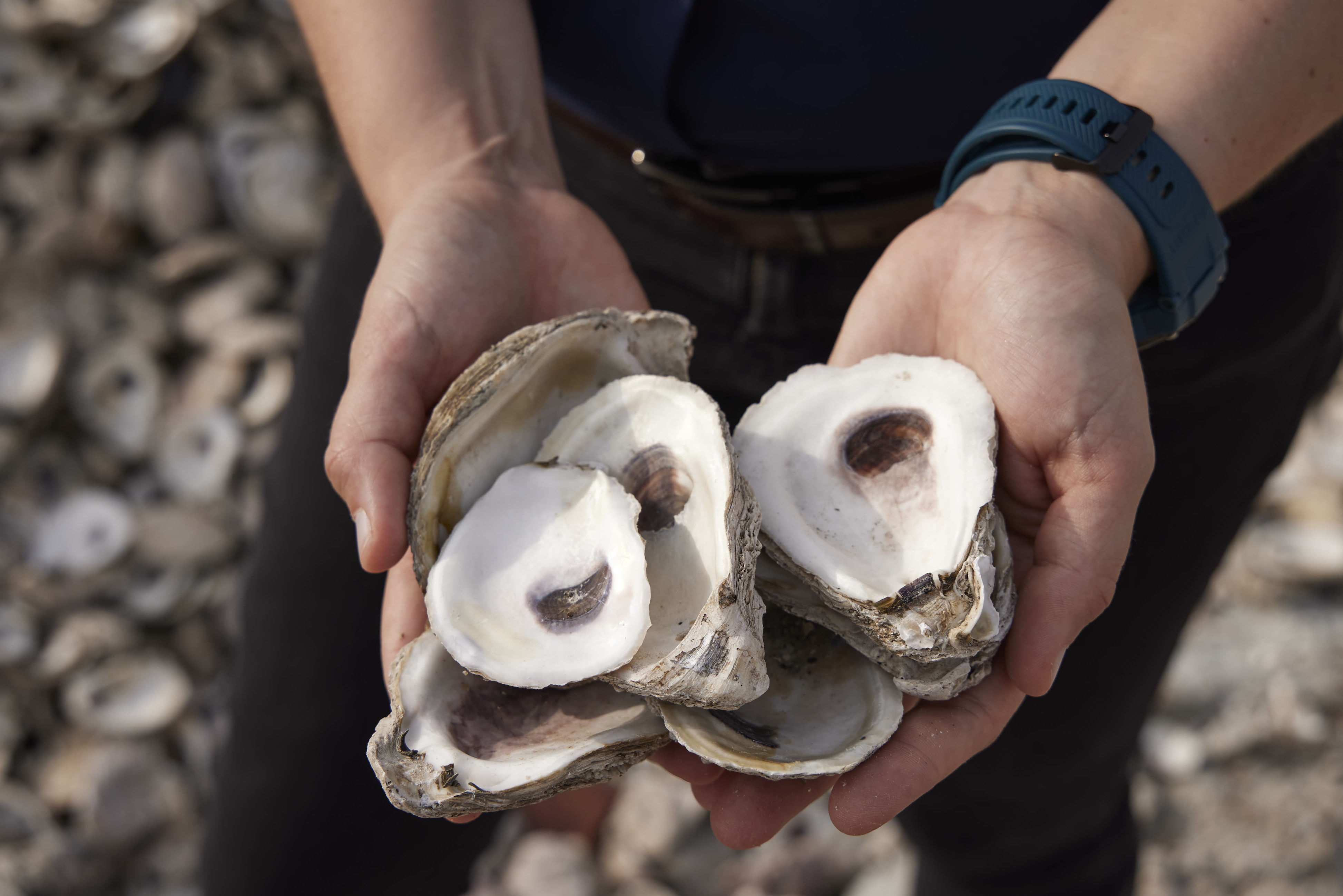Stewing It Over

After my wild boat ride, I sat down at Jeri's Seafood headquarters in Smith Point with Ben Nelson and Tracy Woody for a bowl of oyster stew. It was there at the lunch table that I learned that Dr. Sammy Ray had recently passed away. After a few Dr. Sammy stories, we talked about the future of the oyster industry. If the Texas Water Quality Board can't be convinced to ration a steady flow of fresh water from the Trinity and San Jacinto rivers to keep the seafood fishery alive, then there isn't much hope.
Cities and towns get first priority with the water supply, and in a drought environment, oysters in the bay and farmers downstream aren't getting enough water. Making sure people have clean water in their homes is important. But a large percentage of the flow is being used to water urban lawns while agriculture and fisheries are suffering. That's a strange system of priorities.
In other parts of the Gulf South, there are new ideas about managing the oyster fishery better. At Auburn University, Dr. Bill Walton is developing a new off-bottom system that's been producing wonderful oysters for several years now. Dr. John Supan at LSU manages a hatchery and works with researchers testing new oyster-growing and purification techniques. Most oyster industry insiders believe that this is the wave of the future. But Texas lags behind Alabama and Louisiana in this field.
Texas A&M Galveston contacted Texas Parks & Wildlife a few years ago to discuss new ideas for the oyster fishery, but nothing ever came of it. There is no funding or support for oyster cultivation here, but Texans have never taken the oysters fishery seriously. Which is part of the reason why three-quarters of all Texas oysters are consumed in other states with stronger oyster traditions.
Here's an excerpt from my book Sex, Death & Oysters:
Everyone involved agrees that the Texas oyster fishery is sadly mismanaged. Texas oysters are the sweetest in January and February, when the water is coldest. But there aren’t many oysters left on the public reefs by then. When the season opens on November first, there’s a 400-boat free-for-all, and the Texas oyster reefs are quickly scraped bare.
The problem is, the game wardens at the Texas Parks and Wildlife Department aren’t in a position to come up with a better oyster management plan. Their job is to enforce the law. “Texas oystermen are coming to us and asking us to help them save the oyster reefs,” said the department’s Lance Robinson. “But there is nothing we can do.”
And so far, no state, federal or local government entity, no fishermen’s association or marketing group, has come up with a policy to manage the Texas oyster fishery.
I asked Dr. Sammy Ray about the long-term prospects of the wild oysters in Galveston Bay. Oyster reefs locate themselves where freshwater and saltwater meet. Oysters themselves can tolerate fairly high salinity, Dr. Ray explained; in fact, high salinity is desirable during the mating season. But oyster predators — mainly oyster drills, starfish, and a microorganism called dermo — live in saltwater. So you need a steady supply of fresh water to keep the salinity down and the pests away.
We’re dependent on the survival of our coastal wetlands for a steady supply of freshwater. “If you want to save the oysters in Galveston Bay,” Dr. Ray said, “people in Houston need to stop building in the flood plain.”
Dr. Sammy's Oyster Stew
“I like my oyster stew to be mostly oysters with a little milk, not a bowl of milk with a couple oysters,” said the late Dr. Sammy Ray. Here’s his recipe.
16 fluid ounces (1 pint) shucked oysters and their liquor
1/2 teaspoon sea salt
1/2 teaspoon pepper
Dash of cayenne pepper
1/2 cup milk or half and half
2 tablespoons butter, cut into pieces
Soda crackers
Tabasco sauce
Pour the oysters, including all of the liquid, into a large soup pot, and add about ½ cup of water. Season with salt, pepper and cayenne. Bring nearly to a boil and turn down to a simmer. Cook until the oyster gills curl. Add the milk and heat over medium until hot, but do not allow to boil. Stir in the butter. Serve in a soup bowl with an extra pat of butter on top. Crumble soda crackers into the bowl while you eat and add Tabasco sauce to taste.




